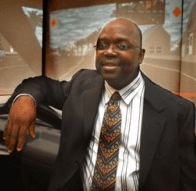
The release notes that the results suggest the axons are injured more easily by strong rotations of the head, and the researchers’ process could calculate which parts of the brain were most likely to be injured during a specific event. The release also notes that lead study author Rika M. Wright, who was supervised by Ramesh, played a key role in the research while completing her doctoral studies in Johns Hopkins’ Whiting School of Engineering. Ramesh adds that the research may also hold implications beyond combat and sports-related injuries, potentially being used to detect axonal damage among patients who have received head injuries in vehicle accidents or serious falls.
Since it may take several weeks for the injury to manifest, Ramesh says, once the symptoms have been assessed, it may be too late for treatment. “But if you can tell right away what happened to the brain and where the injury is likely to have occurred, you may be able to get a crucial head start on the treatment,” Ramesh notes.
The researchers emphasize their desire to use the technology to examine athletes, with an emphasis on football and hockey players, who are tackled or struck during games in ways that cause violent side-to-side motion on the head. Recordings of professional sports games in high definition from multiple angles may also assist in reconstructing the motions involved in sport collisions that lead to severe head injuries, researchers say. The integration instruments designed to measure the acceleration of the head during impact of helmets or mouth guards may also provide data that can be entered into the computer model to determine the likely location of damage.
Ultimately, Ramesh says, researchers would like to collect brain images from soldiers and athletes prior to their entry into combat or engage in highly physical sports activities. After tracking the population and keeping head injury records, “Then, we could look at how their brains may have changed since the original images were collected. This will also help guide physicians and health professionals who provide treatment after critical events,” Ramesh states.
Before the computer model can perform in a clinical setting, additional research, testing, and validation must be conducted, according to the release.
[Source: Johns Hopkins]





